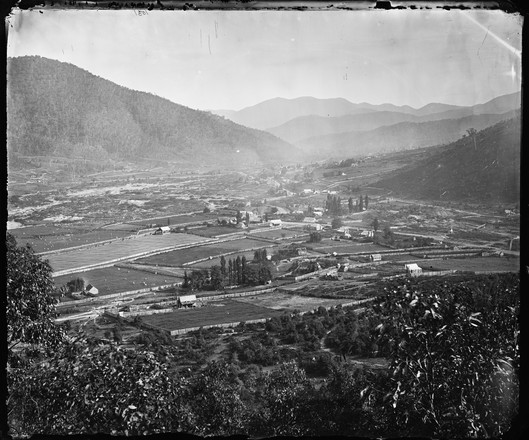Panoramic view of Bright, Victoria
1874
Glass photonegative
Buckland Valley, near Bright in north-eastern Victoria, was the site of an alluvial gold rush. However, as the finds diminished, Chinese miners arrived to sift the abandoned claims. Tensions between the 2000 Chinese and 700 Anglo-Irish miners resulted in the Buckland Riots of 1857, in which three Chinese miners were killed and 2000 fled. The riot was eventually quelled by Beechworth police, led by Robert O’Hara Burke.
From the llustrated Australian News, 23 January 1878
The township of Bright is almost overhung on both north and south by two mountain ranges, which stand just sufficiently apart to furnish a site for the village. Here the River Ovens is joined by Morse's Creek, a little muddy tributary; and Bright — or rather the European portion of it— is situated on the western side of the creek, while the Chinese Camp or village is on the eastern side. The creek thus divides western from eastern civilisation, and the more flourishing condition of the latter would lead a cursory observer to assume that the former had been a failure. The fact is, however, that the Europeans obtained the bulk of the auriferous yield of this golden region, and then left in search of other equally promising fields, while the Mongolians, content with more humble gains, find ample employment and remuneration among the tailings discarded by their Caucasian predecessors. [Illustrated Australian News, 23 January 1878]



 Back to list
Back to list